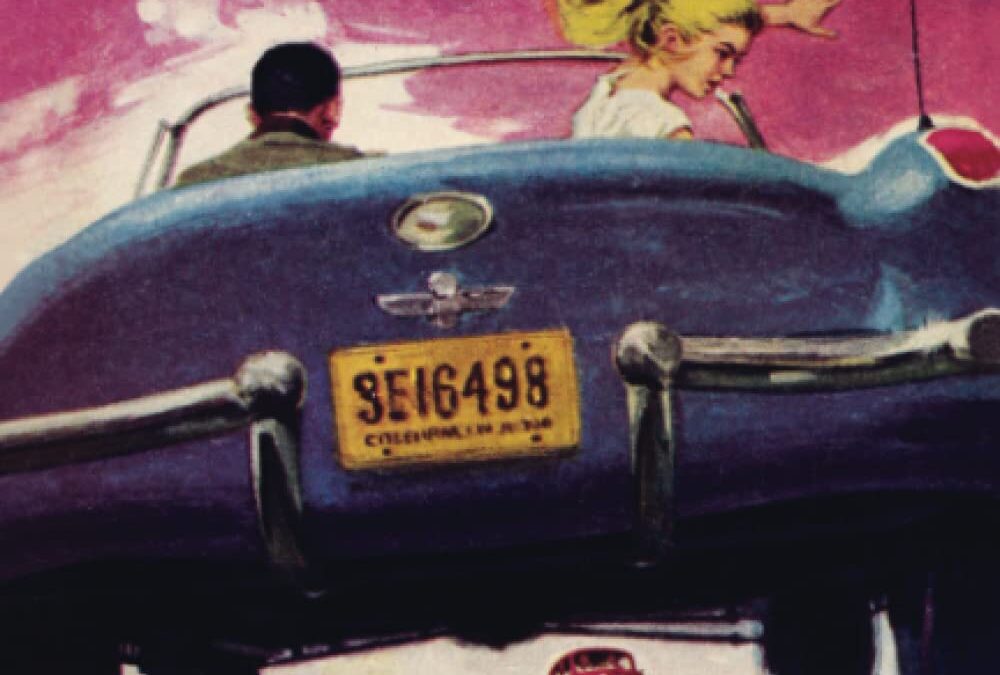
Every year a new fad makes its mark at Raccoon Forks High: often noisy, outlandish, expensive, or silly, but never dangerous or destructive. At this sleepy school, even the drag racing fad was comparatively tame . . . until David “Outlaw” Galt transferred from Capital City High. Usurping Mike Revere’s position as the best boy with the best car—and stealing the girl who went with it—Outlaw set off a power struggle the likes of which Raccoon Forks had never seen. But Mike was willing to drive his way to victory, no matter the cost.
Crash Club is another Felsen novel that captured the heart and soul of 1950s hot rod culture. The lean, mean story follows Revere’s hard-driving path to rodding redemption, riffs on some meaningful messages, and unleashes a fast and furious read. Dig in and learn what millions of readers already know; the world’s most popular hot rod novels are a hopped-up high-horsepower thrill ride.

SIGNED
When Ayrton Senna suddenly lost control of his Williams chassis during the Formula 1 Grand Prix at Italy’s Imola circuit in 1994, he careened into a retaining wall and a crash that killed him. Millions of grieving fans found the three-time world champion’s death incomprehensible, while many commentators began questioning a sport that could kill one of its greatest legends.
In response, the Fédération Internationale de l’Automobile launched an unprecedented campaign to make driver safety a priority, which soon led officials to consider the HANS Device, motor racing’s first head restraint.
In 2001, Championship Auto Racing Teams (CART) became the first to mandate the HANS and implement its use. When seven-time NASCAR Cup champion Dale Earnhardt crashed and died on the last lap of the Daytona 500 that same year, the problem of basal skull fractures finally came into sharp focus in the mainstream media. After years of trying to gain acceptance for their device, HANS inventor Dr. Robert Hubbard and business partner Jim Downing suddenly became overnight heroes.
CRASH! is the story behind the saga of the HANS Device. It touches every form of auto racing on the planet and several subjects close to all of us: political intrigue and struggle; scientific discovery; tragedy; triumph; and matters of conscience. There’s some romance and bromance, too. Above all, there’s a lot of racing and information that even the most die-hard fan will find new and compelling.
Hubbard and brother-in-law Downing eventually helped four of the world’s major auto racing series, including the Indy Racing League, resolve an epidemic of death that killed 12 drivers in a seven-year span, nine by basal skull fractures. Numerous others were being killed by the same injury in lesser known professional series as well as weekend warriors.
The 20-year struggle by Hubbard and Downing to gain universal acceptance for their life-saving device—now in use by over 275,000 competitors worldwide—is an amazing tale of family, genius, perseverance, tragedy and triumph. It tells how the world’s leading auto racing series shouldered the task of saving their driving heroes—and a sport.
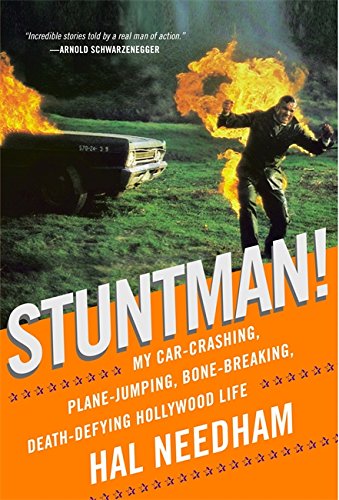
Yep that’s me, Hal Needham, on the cover doing a fire stunt. When you’re on fire you don’t dare breathe because if you do, you’ll suck those flames right down your throat. I was Hollywood’s highest paid stuntman so I should know.
I wrecked hundreds of cars, fell from tall buildings, got blown up, was dragged by horses, and along the way broke 56 bones, my back twice, punctured a lung and knocked out a few teeth…I hung upside down by my ankles under a bi-plane in The Spirit of St. Louis, jumped between galloping horses in Little Big Man, set a world record for a boat stunt on Gator, jumped a rocket powered pick-up truck across a canal for a GM commercial, was the first human to test the car airbag-and taught John Wayne how to really throw a movie punch.
Life also got exciting outside of the movie business. I had my Ferrari stolen right from under my nose, flew in a twin-engine Cessna with a passed out pilot, rescued the cast and crew from a Russian invasion in Czechoslovakia, and once took six flight attendants on a date. I owned the Skoal-Bandit NASCAR race team, the sound-barrier breaking Budweiser Rocket Car and drove a souped-up, fake ambulance in a “little” cross-country race called The Cannonball Run, which became the movie I directed by the same name. Oh yeah, I also directed Smokey and the Bandit, Hooper and several other action/comedy movies that I liked a bunch.
I was a sharecropper’s son from the hills of Arkansas who became a Hollywood stuntman. That journey was a tough row to hoe. I continually risked my life but that was the career I chose. I was never late to the set and did whatever I had to do to get the job done.
Hollywood’s not all sunglasses and autographs. Let me tell you a few stories…
Bill Lowenburg
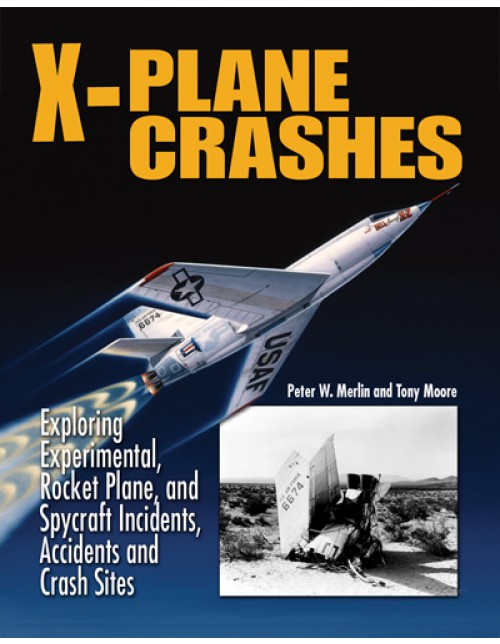
Known as “The X-Hunters,” authors Peter W. Merlin and Tony Moore have located more than 100 crash sites of exotic aircraft from Edwards air Force Base and Area 51. Together, they have recovered parts of supersonic rocket planes, stealthy spy craft, and vehicles that have reached the edge of space. Each story in the book profiles an unusual aircraft and the brave men who flew it. The authors examine the contributing causes of each crash and use then-and-now photographs to illustrate their findings. The stories end with The X-Hunters’ search for the crash site and what they discovered. Each adventure combines C.S.I.-type skills with X-Files persistence, with a dash of Indiana Jones for adventure. Aircraft profiled include the YB-49 and a pair of N9M flying wings, X-1A, X-1D, XB-51, XB-70, SR-71, YF-12, U-2 prototype, and many more.

Finding an aircraft crash site is 95 percent research and five percent field work. To be successful at finding historic aircraft wrecks, a Wreckchaser must do the homework first. This book is the starting place for anyone interested in aviation, history, research, hiking, and historic preservation.Wreckchasing 101: A Guide to Finding Aircraft Crash Sites teaches readers how to research and locate a historic aircraft’s final resting place. It takes readers to more than 20 commercial and military crashes and provides extensive research resources, including the longitude and latitude coordinates for more than 500 aircraft wrecks, plus data on another 1,700 aircraft crashes. The book also provides information on how to obtain civil and military crash reports, individual military aircraft record cards, and vital topo maps, as well as lists of Internet resources and recommended reading. Individual aircraft crashes profiled include:• Western Air Express Fokker F-10A • The Philippine Clipper • Grand Canyon Mid-Air • Carole Lombard’s TWA DC-3 • DC-3 That Crashed and Flew Again • Airwest Mid-Air with F-4 Phantom • Airship USS Macon and its Sparrowhawk fighters • Grumman F3F Recovered from the Pacific • Arizona TF-51 crash • Lend-Lease P-39 Found in a Canadian lake …and much more.
Deadliest Crash DVD
Michael J. Hurst

A detailed description of the Douglas C-133 Cargomaster by an author who served as navigator in the Cargomaster during the last two years of its 15-year AF service. A brief history of strategic airlift precedes an account of USAF proof-of-concept testing of turboprop propulsion. C-133 design, development and flight testing provide the foundation for development of air and ground crew and worldwide airlift routes. Topical chapters cover technupload ical information, C-133 employment, support to NASA and the strategic missile force and its employment in the Vietnam War and on special missions of all kinds. Of 50 built, ten C-133s were lost in accidents. The crashes chapter gives complete details of the accidents and the most comprehensive analysis available of the reasons for the losses. Three squadrons flew the C-133 and are detailed in their own chapter, as are histories of each of the fifty airplanes built. The book concludes with a chapter on the never-built Douglas C-132, which would have been the world�s largest turboprop aircraft. More than 330 photos and illustrations show the airplanes and people. The index lists over 970 persons as well as other topics and there is an extensive bibliography. The16-page color section shows aircraft interiors and operational activities. Eight fold-out sheets contain large Douglas factory drawings and one large C-133 photograph.
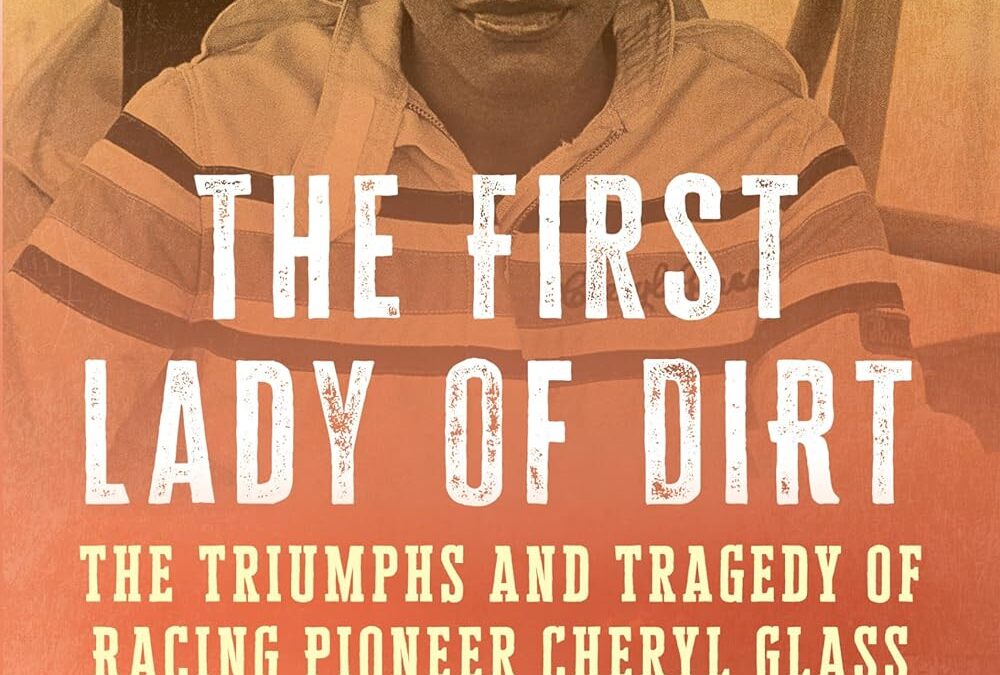
The incredible, little-known story of the first successful Black woman in the sport of auto racing in the United States.
Early in her career, Cheryl Glass looked like a lock to become the first Black woman to compete in the Indianapolis 500. From racing quarter midget cars at ten years old to Indy Lights in her twenties, Cheryl was on her way towards a winning career in auto racing.
In The First Lady of Dirt: The Triumphs and Tragedy of Racing Pioneer Cheryl Glass, Bill Poehler tells Cheryl’s full story for the first time. He recounts how Cheryl rapidly became the first successful Black woman in the sport, yet frequently encountered racist and sexist taunts from other drivers and fans throughout her career. While appearing to have it all—talent, ambition, looks—she faced many challenges on and off the track and her life soon spun out of control.
Featuring exclusive interviews with Cheryl’s mother, friends, and competitors, The First Lady of Dirt takes you behind the scenes and in the driver’s seat of Cheryl’s life. Poehler, an amateur racer himself, places the reader at the track, smelling the dirt and fumes, hearing the roaring engines and crashing metal, and feeling Cheryl’s joy and pain. It’s the inspiring story of a racing pioneer and a tragic tale of the pressures that are often hidden from public view until it’s too late.
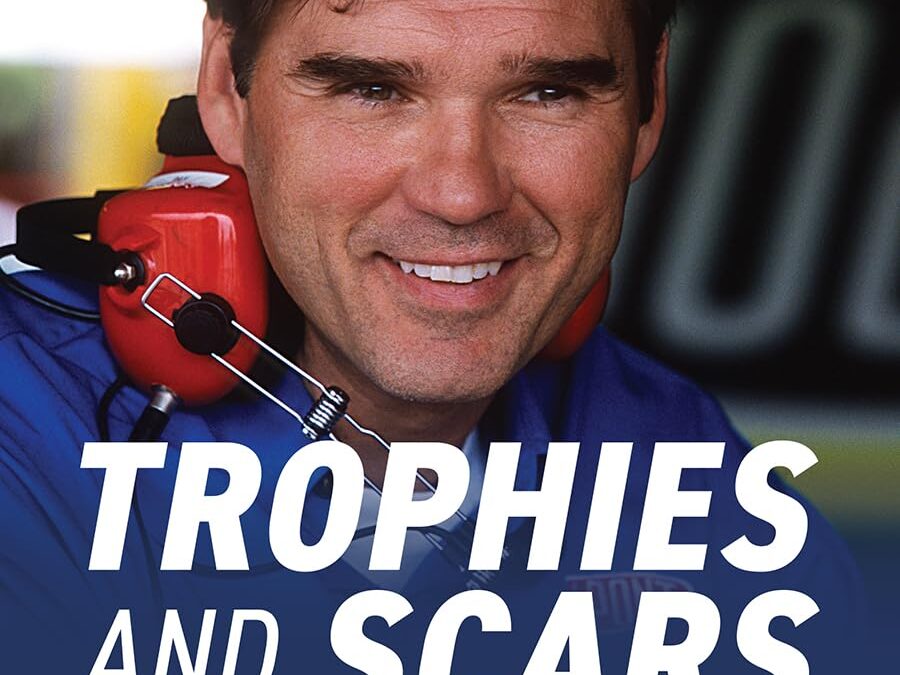
Trophies and Scars is the profoundly personal, sincere, and remarkably revealing story of the life and times of NASCAR Hall of Famer Ray Evernham. A son of the Jersey Shore, Evernham dedicated his life to fulfilling his boyhood dream of becoming a professional race car driver.
By age eighteen, he was banging fenders with good success on the Northeast short track circuit. When his dreams of becoming an Indy car sensation literally crashed and burned, he turned to Roger Penske’s International Race of Champions (IROC), before another brutal crash forced him to give up his Indy dream for good.
It was time to change careers.
As a leader of a race team on the technical rather than the driving side, he discovered new skills critical to building successful racing organizations. A brief, ill-fated, and downright volatile stint on Alan Kulwicki’s crew, turned into a “right place at the right time” scenario, sparking a seminal partnership with racing phenom Jeff Gordon. They would prove to be one of the most potent racing duos in history.
Evernham shares previously untold tales of how the duo led the No. 24 team to three championships in four seasons (1995, 1997, 1998) and a series-leading forty-seven wins, revealing in candid detail how and why their storied relationship came to an end.
The book also details Evernham’s time spearheading the return of Dodge to NASCAR, building Evernham Motorsports into one of the most successful NASCAR teams, as well as his transformation into a TV personality with roles as a NASCAR analyst for SPEED, ESPN, ABC, FOX, and NBC and as host to his own TV series, AmeriCarna, on the Velocity channel.
Woven throughout all these stories recounting the many twists and turns of his life, he reveals how he buried himself in work to cope with his personal challenges, such as his son Ray J.’s battle with leukemia and later autism diagnosis. Many of these painful challenges ultimately brought rich rewards, such as the formation of the Evernham Family Racing for a Reason Foundation, funding for IGNITE, education and training programs for young adults with high-functioning autism or Asperger’s syndrome, his loving marriage to Erin, and the birth of their daughter Caite.
You needn’t be a racing fan to appreciate Evernham’s inspiring journey of tireless persistence, radical determination, steadfast leadership, and fearless reinvention. For as he believes, a life lived to the fullest is packed with trophies–and scars.
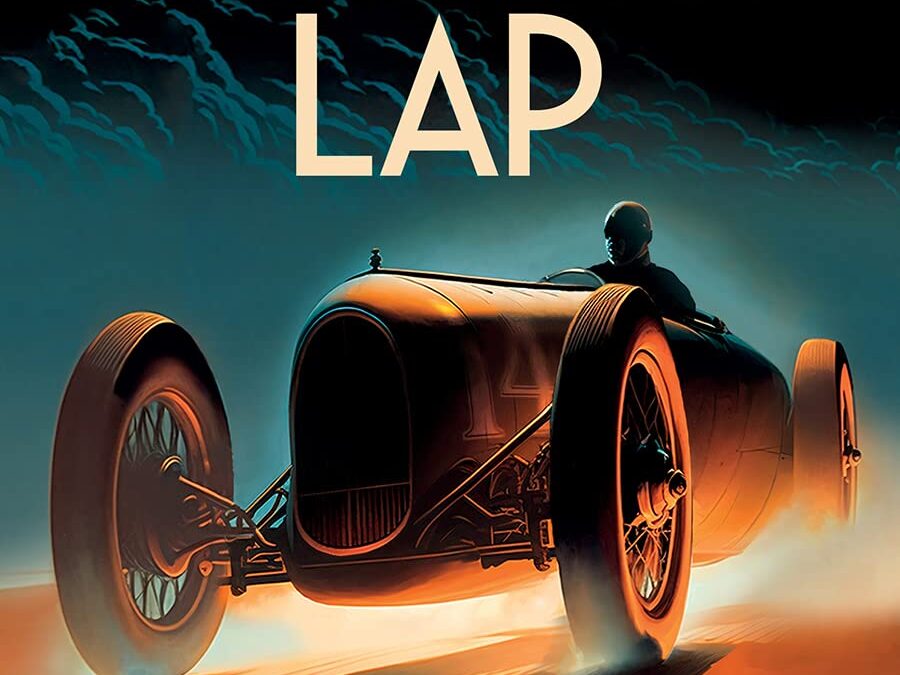
The Last Lap is a gripping inquest into the fast life and mysterious death of racing driver Pete Kreis, infamously killed in practice at the celebrated 1934 Indianapolis 500. In a compelling narrative that reads like a novel, author William Walker’s lifelong obsession with Kreis’s mysterious demise has created a rich story line that takes readers back to the glamorous and dangerous times that marked the beginning of automotive competition.
Much more than a motor racing story, The Last Lap is the tale of a boy who rises from the obscurity of back country Tennessee roads to compete in the world’s fastest and most celebrated races, and the parallel tragic collapse of a rich and powerful Southern family.
Piloting a front-drive race car in practice, Kreis crashed into the wall of Turn One, rode along the top of the retaining wall for seventy-five feet, and careened down an embankment at the south end of the oval. As the car smashed into a tree in the backyard of a nearby house, both men were killed. The next year, an impromptu “coroner’s jury” of Indy drivers and Speedway experts held an intense review of the accident, and they concluded that Kreis’s demise was “the strangest death in all racing history.”
Lifelong racing fan and acclaimed historical author, Walker’s (Betrayal at Little Gibraltar) search to solve the mystery surrounding Kreis’s death has spanned three-quarters of a century and too many miles to count. Walker’s fascination with the mysterious crash is driven by more than a love of racing–Kreis is a distant cousin. The dynamic, nonfiction narrative is the result of a decades long quest in search of the truth—the real story of Pete Kreis, his colorful racing career, and his tragic death.

In this in-depth study of the 737, the renowned aviation historian and author Graham M. Simons explores the whole story of the type’s design and introduction.
The Boeing 737 is an American short- to medium-range twinjet narrow-body airliner developed and manufactured by Boeing Commercial Airplanes, a division of the Boeing Company. Originally designed as a shorter, lower-cost twin-engine airliner derived from the 707 and 727, the 737 has grown into a family of passenger models with capacities from 85 to 215 passengers, the most recent version of which, the 737 MAX, has become embroiled in a worldwide controversy.
Initially envisioned in 1964, the first 737-100 made its first flight in April 1967 and entered airline service in February 1968 with Lufthansa. The 737 series went on to become one of the highest-selling commercial jetliners in history and has been in production in its core form since 1967; the 10,000th example was rolled out on 13 March 2018.
There is, however, a very different side to the convoluted story of the 737’s development, one that demonstrates a transition of power from a primarily engineering structure to one of accountancy, number-driven powerbase that saw corners cut, and the previous extremely high safety methodology compromised. The result was the 737 MAX. Having entered service in 2017, this model was grounded worldwide in March 2019 following two devastating crashes.
In this revealing insight into the Boeing 737, the renowned aviation historian Graham M. Simons examines its design, development and service over the decades since 1967. He also explores the darker side of the 737’s history, laying bare the politics, power-struggles, changes of management ideology and battles with Airbus that culminated in the 737 MAX debacle that has threatened Boeing’s very survival.
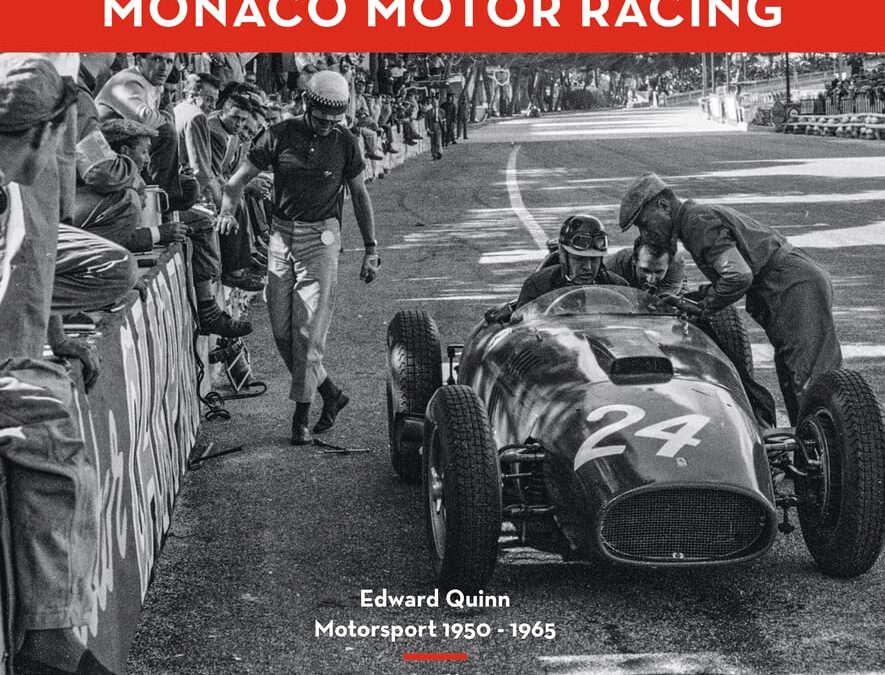
- Formula 1 of the 1950s and ’60s: images from a legendary era of motorsport
- Driver portraits, racing action and historic Formula 1 cars from Ferrari, Porsche, Alfa Romeo and Jaguar
- Over 270 photographs from Edward Quinn’s archive, some of which have never been published before
- Insights into post-war Monaco: lifestyle, glamor and celebrities
The Monaco Grand Prix is considered one of the most demanding races in Formula 1. Constant gear changes and the slowest corner in the world championship have always demanded everything from the racing drivers. Edward Quinn captured the most famous car race in the world from 1950 to 1965 in numerous photos. In his recordings, the well-known Formula 1 track is presented with almost no crash barriers and run-off zones, without advertising posters and sponsor logos. Many of his pictures are now combined for the first time in a large-format illustrated book. Accompanied by short descriptions and background information, they give a fascinating insight into the motorsport history of that time. Text in English and German.
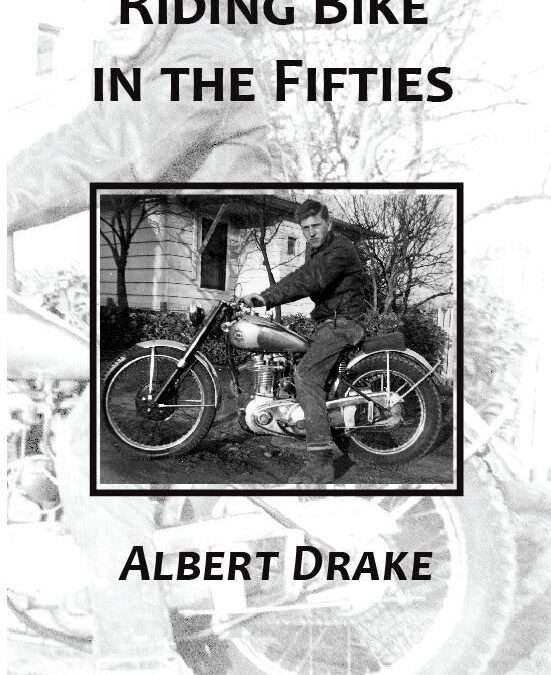
“Sometimes, on certain mornings in early fall, when there is a light fog and the air holds a hint of moisture, I can recall so clearly the sound of a single’s exhaust. The mist put a layer of moisture on the chrome, and I’d wipe dew off the seat with a rag, tickle the carb and mount the bike. Using the compression release, I’d kick the piston through until it was on compression stroke and kick it without the compression release, maybe once, maybe more, until it fired. The exhaust was crisp, sharp, with a bark as I cracked the throttle.”
This book contains oral histories, essays, a long poem about riding motorcycles in the 1950s. First-hand accounts by guys who had the experiences. A journey into memory, back to a time that has to be called the Golden Age of Motorcycles, British bikes– BSA, Triumph, AJS, Matchless, Norton, Velocette –had invaded roads and race tracks previously dominated by Harley-Davidson and Indians. If there was a rule it was “run what ya brung,” never mind about insurance, licenses, headlights, mufflers, crash helmets. There was never a time when so many were so free on two wheels.
“Riding Bike in the Fifties” is jammed with first-hand accounts of riding and racing motorcycles in the 1950s and vintage black and white photographs and illustrations. Topics range from “What We Wore,” “Where We Rode,” to “The Morning Speed Run,” and “Three-Wheeling.”

An intimate insight into a racing life
Mike Hailwood is a legend. Arguably the world’s greatest ever motorcycle racer, he transcended eras and generations. His two-wheeled racing career began – and he initially made his name – aboard big, British single cylinder machines, then he took to Japanese and Italian four-stroke multis, before finishing on booming V-twins and two-strokes.
He went from the black-and-white era, from one-colour dark leathers and pudding basin crash helmets, to the multicoloured, full-face helmeted, sponsorship driven days of the late 1970s. He found time to do some car racing too, recording a third at Le Mans in 1969 driving a Ford GT40, winning the 1972 Formula 2 European Championship and competing in 50 F1 Grands Prix, his debut in 1963, his last in 1974.
Though the car stats are impressive, the motorcycle ones are astonishing – nine world championships, 76 GP wins, 14 TT victories, his TT victories separated by 18 years, the first 1961, the last 1979. On top of this he was awarded the MBE and then the George Medal for his bravery in rescuing fellow F1 driver Clay Regazzoni in 1973.
It is almost impossible to comprehend the tragic irony that the life of this man, who had risked and survived so much, a hero to thousands for his derring-do, was curtailed as he drove the family car to collect a fish and chip takeaway. That his daughter Michelle died alongside him adds an extra layer to the tragedy.
Mike’s son David survived the accident and here has allowed access to the family’s treasure trove of personal artefacts. These range from the mundane to the magnificent but together they tell the incredible story of Mike the Bike.
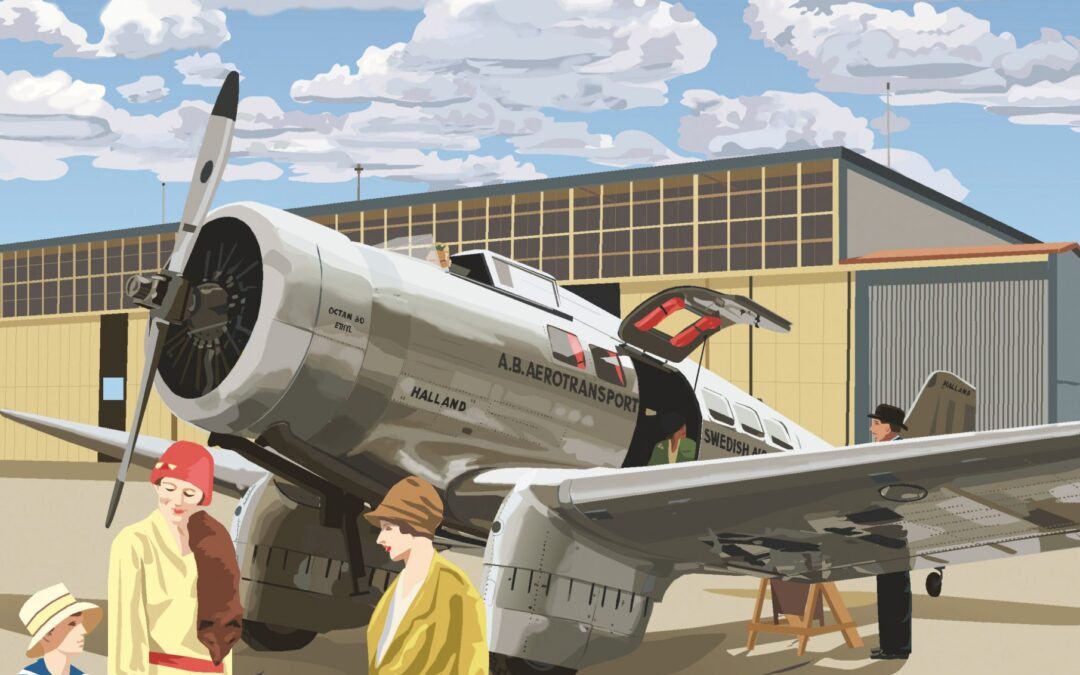
At the beginning of the 1930’s, night air mail services started to become more and more important for European Airlines. Navigation and safety equipment improved drastically and aircraft became much more economical to fly. The introduction of the fast Lockheed Orion by Swissair in April 1932 led to a true revolution within air transport. “Everyone wanted aircraft that flew faster than their existing obsolete Fokker- or Junkers aircraft.
In Sweden, AB Aerotransport’s Managing Director, Carl Florman, became interested in faster airliners as well. In May 1933, Bernt Balchen introduced them to the Northrop Gamma and was interested in a similar Aircraft for his airline. Offers were requested through Northrop representative, Norwegian aviator Bernt Balchen, AB Aerotransport ordered in October 1933, a passenger Delta 1C and in January 1934, a mail aircraft, the Delta 1E.
The operation of both aircraft was marked by problems and challenges for the pilots. It took them some time to master the aircraft. The Delta 1E never entered service, as it crashed on a trial mail flight. In 1937, ABA sold the Delta 1C to Spanish airline Lineas Aereas Postales Espaňolas – LAPE. It remained in civil and military service until well after World War II.
After intensive research, the author (Rob J. M. Mulder) describes in detail the history and operation of these two aircraft. But Bernt Balchen’s role in the story and the visit of a Northrop Gamma to Norway is described. Also, we learn about the history and development Northrop Alpha, Beta and Gamma, as well as the other Deltas. In addition, the military types and their use in Norway and Sweden and other countries is described. The book is illustrated with many photographs, tables, colour profiles by Juanita Franzi, Nils Mathisrud and Torstein Landström Wallmo. Mats Averkvist supplied drawings and was a great support for the author.
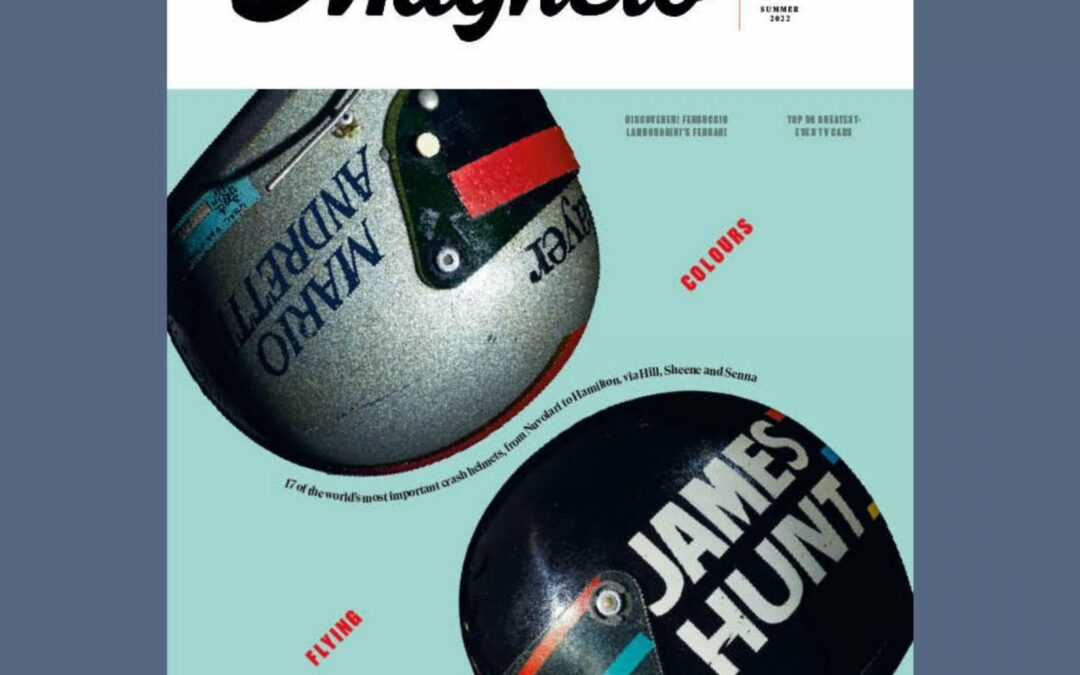
Magneto issue 14 Summer 2022. Crash helmets from the greatest motor sport driver, a stunning Alfa 8C, Richard Mille’s Matra, Bentley V8, and more
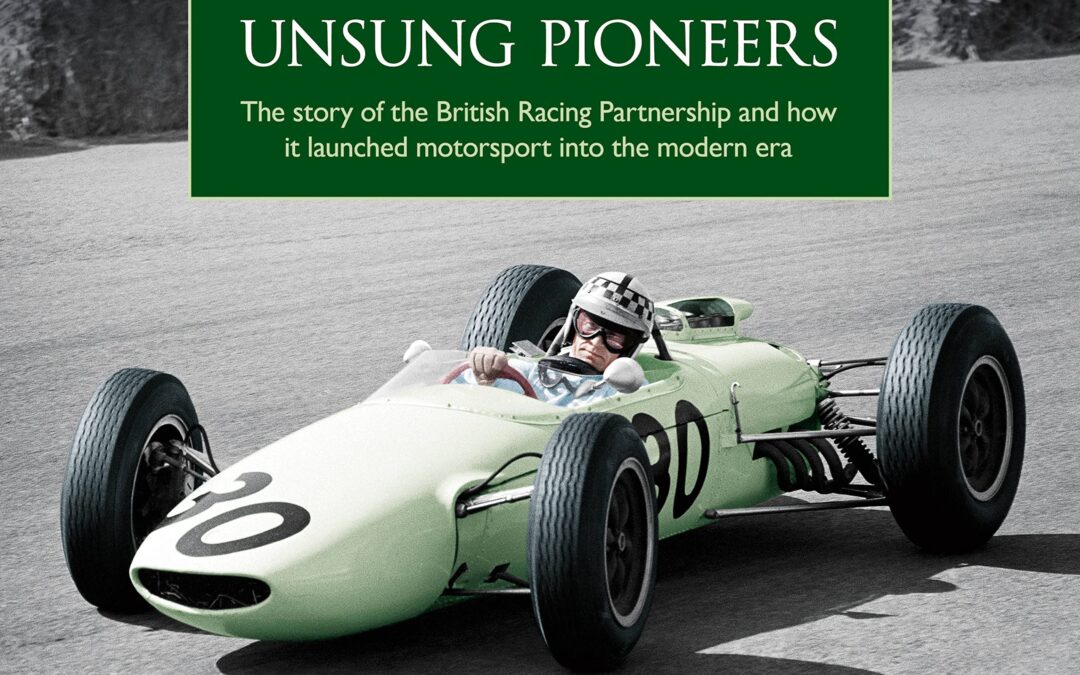
This is the previously untold story of a very special British racing team. The British Racing Partnership (BRP), which operated from 1958 to 1964, is best known for its association with Stirling Moss, who was driving a BRP-entered car at Goodwood on that fateful day in 1962 when a serious crash ended his career.
Less familiarly, BRP became the first fully sponsored team in Formula 1, partnering with Yeoman Credit, a go-ahead finance house, in an initiative that led to a transformation of the sport. Formula 1’s Unsung Pioneers tells the entire history of BRP in unprecedented detail, thanks to the author’s prodigious research and numerous interviews over the years with many leading participants, including Moss himself, team boss Ken Gregory, top driver Tony Brooks, chief mechanic Tony Robinson and many others.
- Formation of the team in 1958 by Stirling Moss’s father, Alfred, and his manager, Ken Gregory, running rear-engined Coopers in F1 and F2.
- Arrival of sponsorship by Yeoman Credit in the autumn of 1959, a year that saw Stirling Moss finish second in the team’s BRM at the British Grand Prix.
- The tragic 1960 season brought the deaths of three BRP drivers — Harry Schell, Chris Bristow and Ivor Bueb — in the space of three months, but racing activities widened to include Lotus sports cars.
- A different finance house, United Dominions Trust, became the sponsor for 1961, when Moss won many non-championship Formula 1 and sports car races for the newly named UDT-Laystall team.
- The 1962 season began badly with Moss’s Goodwood crash but peaked at that same circuit with Innes Ireland’s Tourist Trophy victory driving a BRP-run Ferrari 250 GTO.
- In response to the ground-breaking Lotus 25 with its monocoque chassis, BRP in 1963 built its own car for the first time, a BRM-powered F1 design also with a monocoque.
- The last F1 season, 1964, brought one final non-championship F1 victory for the team, achieved by Innes Ireland at Snetterton.
- BRP cars at Indy: an epilogue to the team’s story saw two cars built for the 1965 Indianapolis 500.
Lavishly produced and illustrated with 350 period photographs, this book will be treasured by all motorsport enthusiasts.
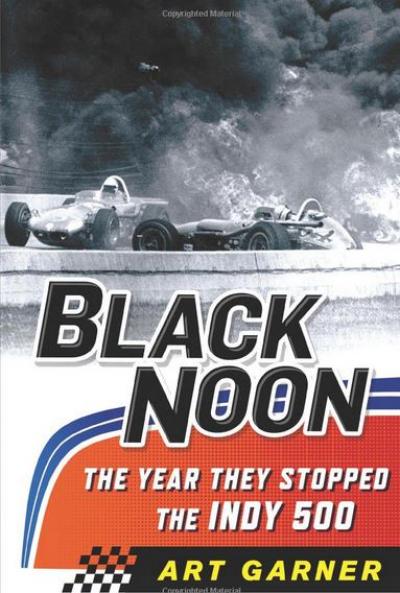
Winner of the 2014 Dean Batchelor Award, Motor Press Guild “Book of the Year”
Short-listed for 2015 PEN / ESPN Literary Award for Sports Writing
Before noon on May 30th, 1964, the Indy 500 was stopped for the first time in history by an accident. Seven cars had crashed in a fiery wreck, killing two drivers, and threatening the very future of the 500.
Black Noon chronicles one of the darkest and most important days in auto-racing history. As rookie Dave MacDonald came out of the fourth turn and onto the front stretch at the end of the second lap, he found his rear-engine car lifted by the turbulence kicked up from two cars he was attempting to pass. With limited steering input, MacDonald lost control of his car and careened off the inside wall of the track, exploding into a huge fireball and sliding back into oncoming traffic.
Closing fast was affable fan favorite Eddie Sachs. “The Clown Prince of Racing” hit MacDonald’s sliding car broadside, setting off a second explosion that killed Sachs instantly. MacDonald, pulled from the wreckage, died two hours later.
After the track was cleared and the race restarted, it was legend A. J. Foyt who raced to a decisive, if hollow, victory. Torn between elation and horror, Foyt, along with others, championed stricter safety regulations, including mandatory pit stops, limiting the amount a fuel a car could carry, and minimum-weight standards.
In this tight, fast-paced narrative, Art Garner brings to life the bygone era when drivers lived hard, raced hard, and at times died hard. Drawing from interviews, Garner expertly reconstructs the fateful events and decisions leading up to the sport’s blackest day, and the incriminating aftermath that forever altered the sport.
Black Noon remembers the race that changed everything and the men that paved the way for the Golden Age of Indy car racing.
Soft Cover



















